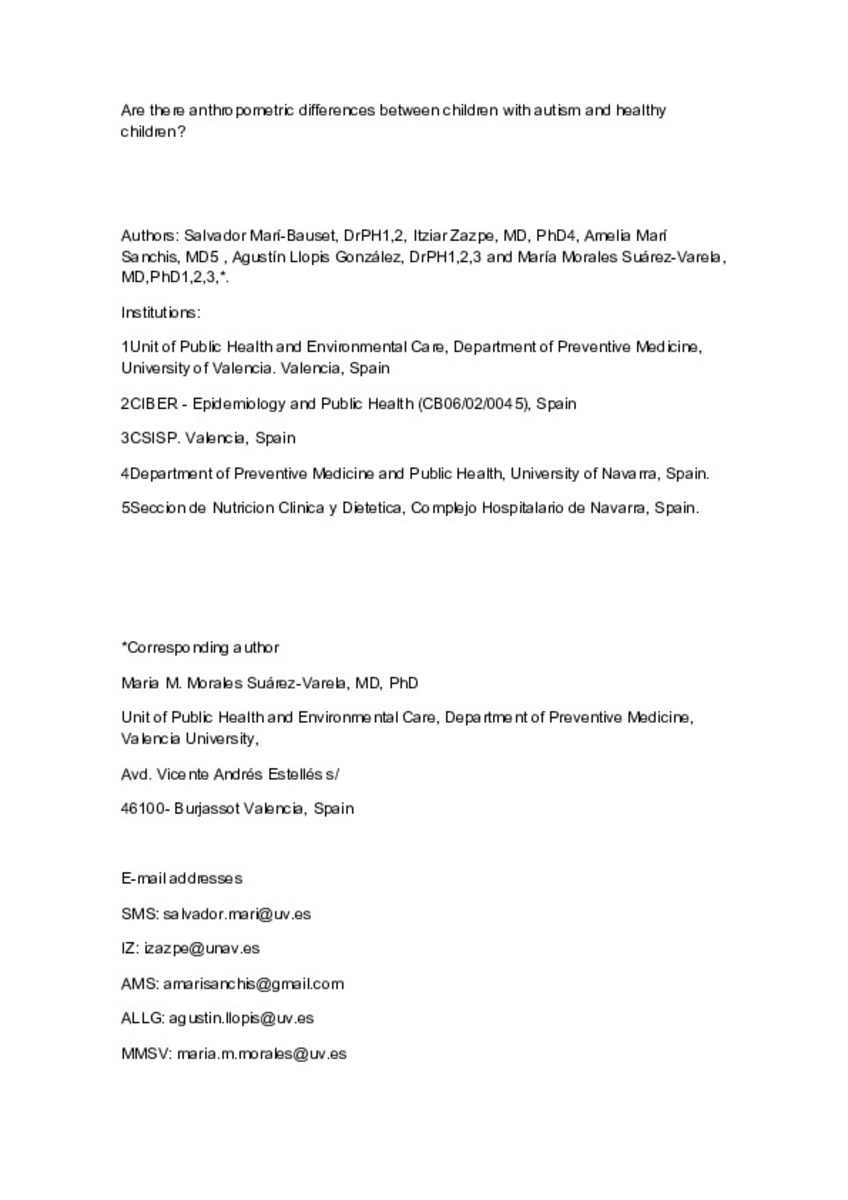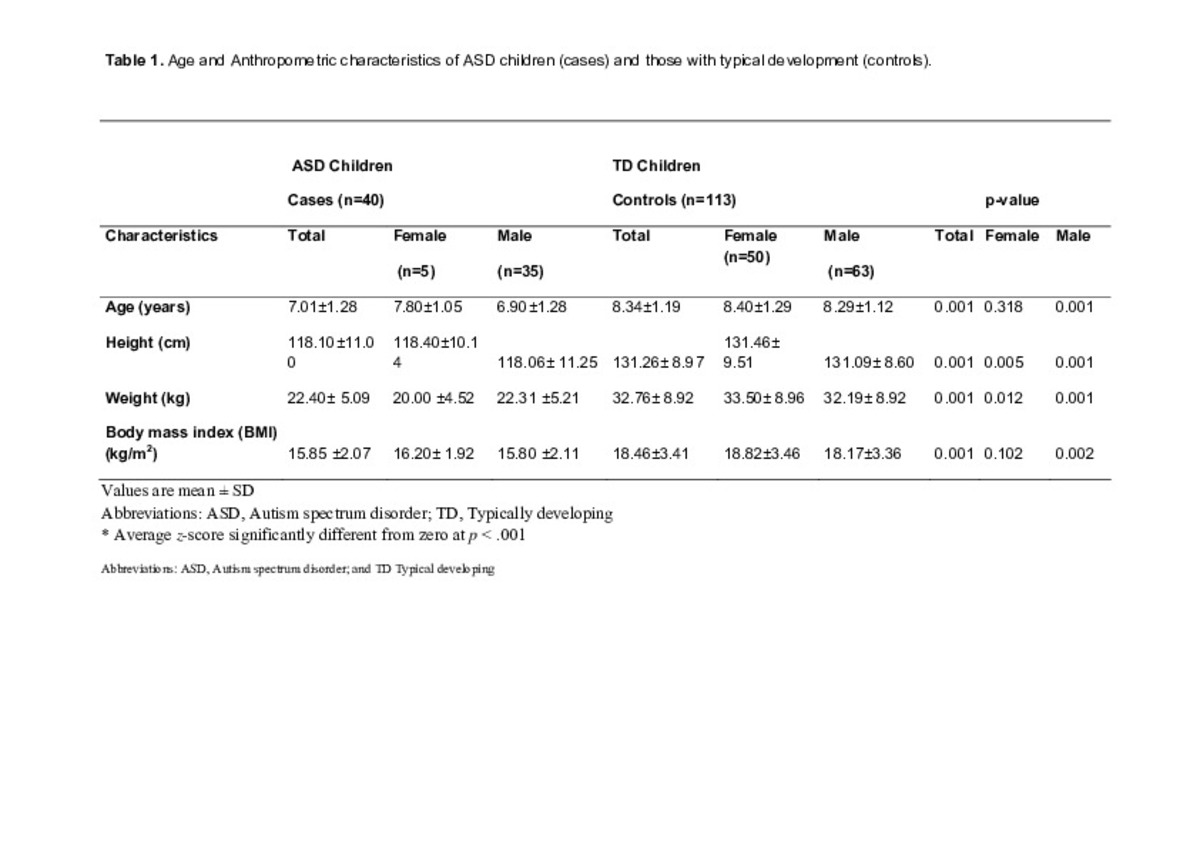Are there anthropometric differences between children with autism and healthy children?
Palabras clave :
Spain
Anthropometric growth
Autism spectrum disorders
Body mass index
physical growth
Fecha de publicación :
2013
Cita:
Bauset SM, Zazpe I, Sanchís AM, González AL, Suarez-Varela MM. Are there anthropometric differences between autistic and healthy children? J Child Neurol 2013 Oct;28(10):1226-1232
Aparece en las colecciones:
Estadísticas e impacto
0 citas en

0 citas en

Los ítems de Dadun están protegidos por copyright, con todos los derechos reservados, a menos que se indique lo contrario.









